Pillars of Eternity II: Deadfire Review
May 16, 2018 | 14:30
Companies: #obsidian-entertainment #versus-evil
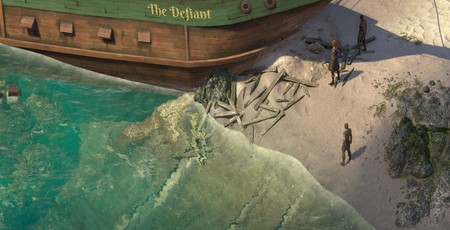
Price: £34.99
Developer: Obsidian Entertainment
Publisher: Versus Evil
Platform: PC
It feels churlish to say this about any game that offers 30+ hours of play, but it could be argued that the original Pillars of Eternity lacked a certain level of scope. Yes the art was lavish, yes the stakes were high, and yes it contained a dungeon beneath your castle so deep that it for all intents and purposes took your party back through time. Yet despite all that, Pillars of Eternity didn't have the grand and sweeping scale of, say, the original Baldur's Gate, and while the core of the game certainly wasn't short on content, the fringes of its world felt comparatively less fleshed out.
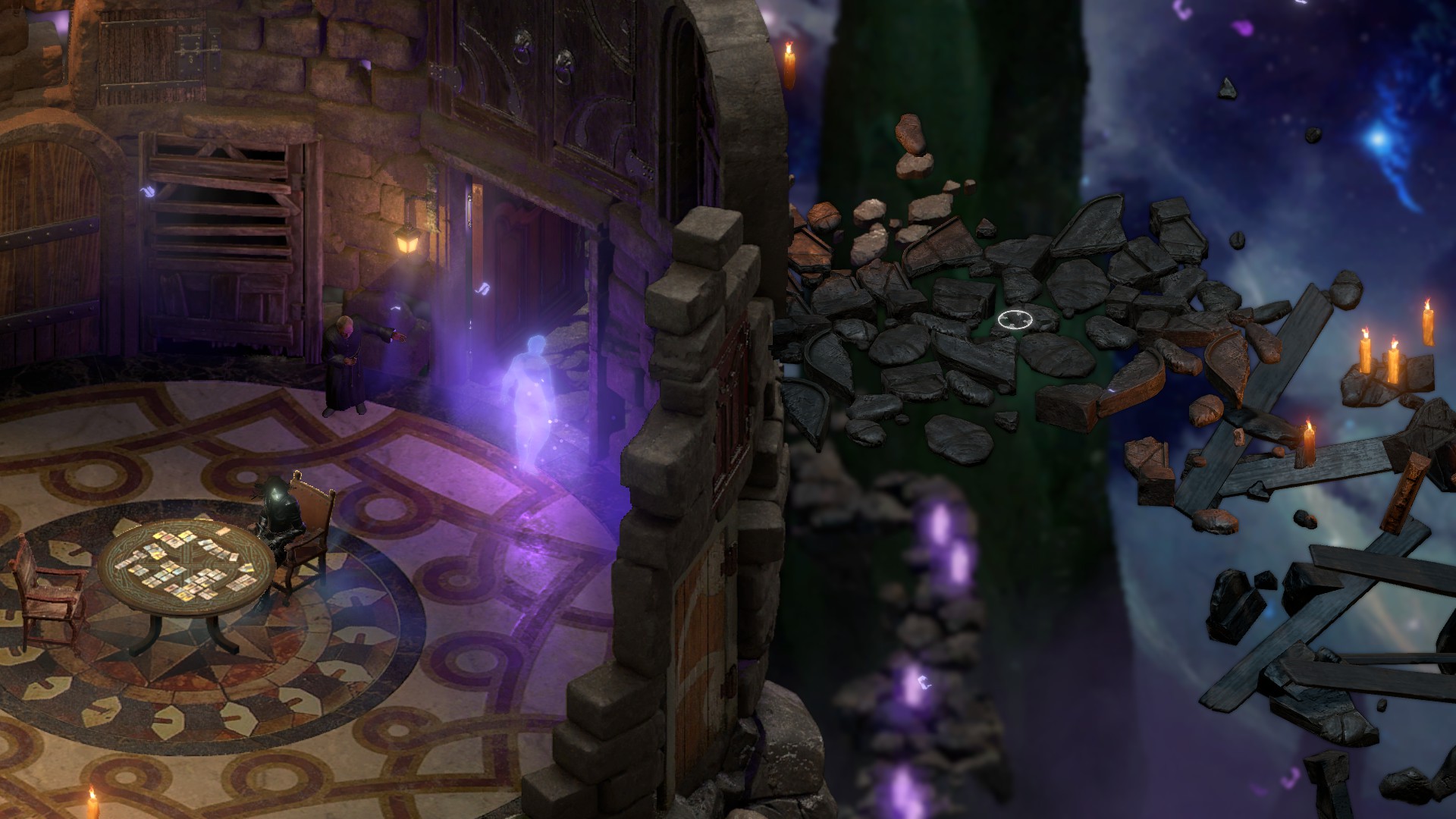
I don't know whether this was something Obsidian Entertainment was itself aware of, but it's interesting that Pillars of Eternity II makes fleshing out the map a core part of the game. The sequel takes place in a truly enormous island archipelago, and goes to great lengths to encourage exploration and discovery away from its central storyline. Your home base is not a castle but a ship, which you can sail to dozens upon dozens of islands amidst the crystalline waters of the Deadfire. Alongside the main story that sees you hot on the heels of a wandering God are a host of subplots that involve piratical politics, fractious local tribes, and warring trading companies. You can even take on jobs to find and name uncharted islands.
It's the biggest RPG Obsidian has produced since Fallout: New Vegas, and one which also fixes many of the problems present in the original. But I also worry that it reaches a little too far in its ambitions, and that its added scope comes at the price of focus and finesse.
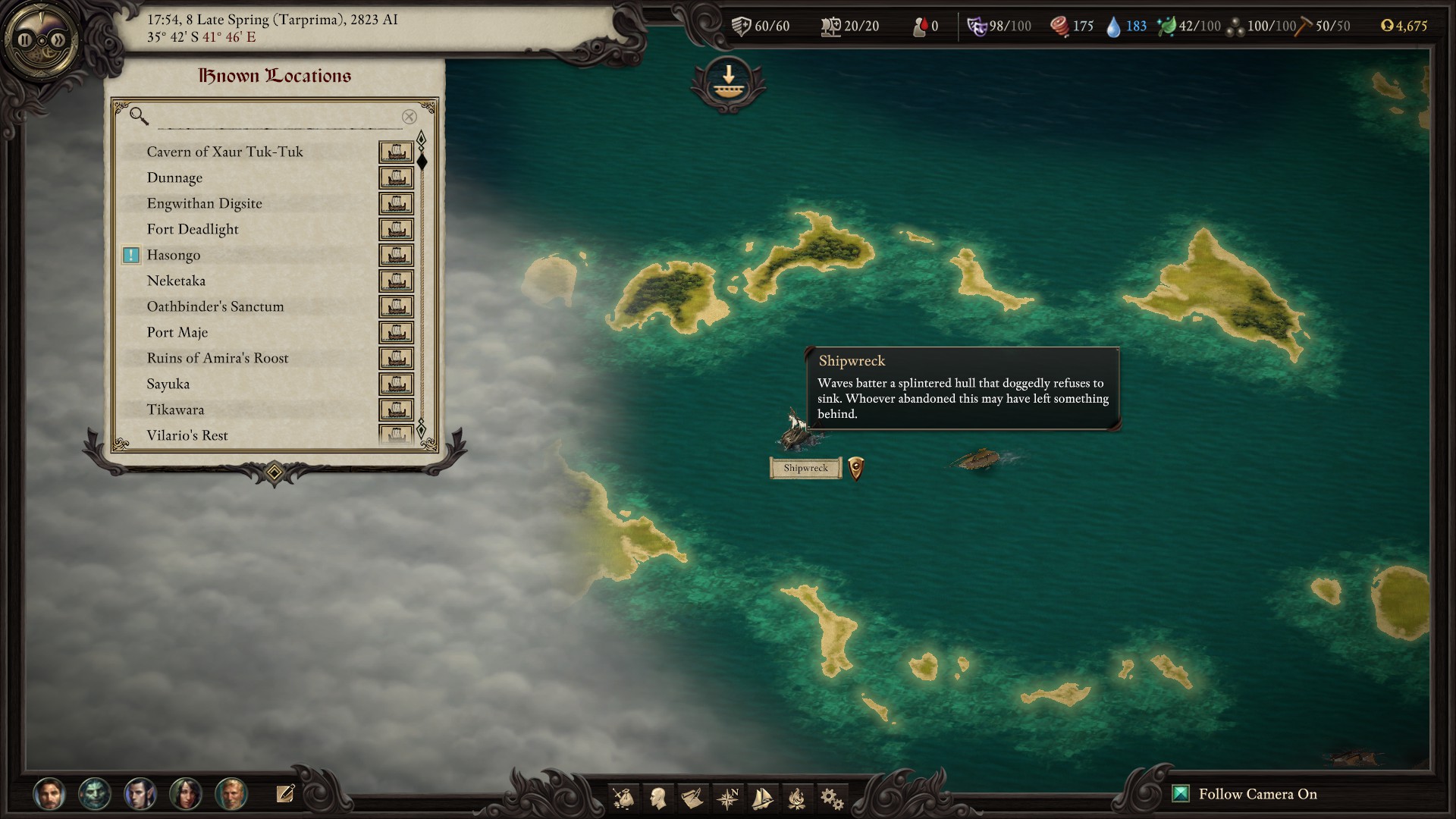
Pillars II certainly starts with a bang, as it transpires that Eothas, a God whose disappearance from Pillars' pantheon was a major plot-point in the first game, has been sleeping underneath your castle the whole time. When he wakes up, the very first thing he does is destroy your home and kill you. And I thought I had problems with mice in the attic.
Fortunately for you, you're a Watcher, a person who can speak with the souls of the dead. This ability has attracted the attention of another God – specifically Berath, the God of Death. Berath scoops your soul out from Eternity and offers to place it back into your body, provided you agree to do her bidding. Specifically, Berath tasks you with following Eothas into the Deadfire Archipelago to discover what exactly he's up to.
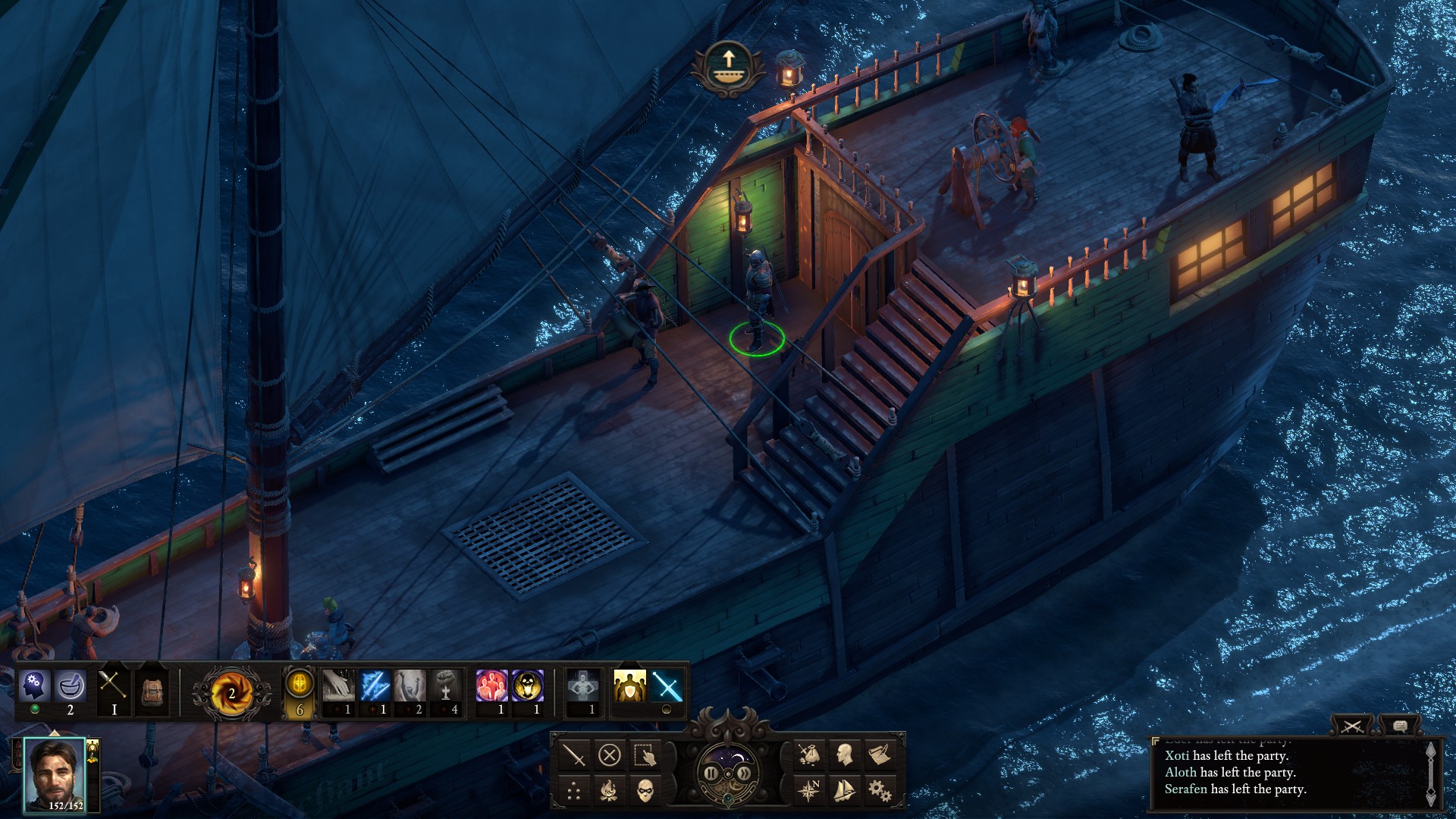
It's possible to play Pillars II without having experienced the original Pillars, although I'm not entirely sure I'd advise that. The game lets you import a previous save so that your choices carry over, or establish your character history either through a broad-strokes conversation with Berath, or making more specific decisions in the game menu prior to starting a game. Either way, jumping in without having played the first Pillars is going to involve swallowing a lot of lore very quickly, and there's a whole bunch more to digest in the sequel, an issue that we'll discuss later.
Once you've created your character, you awake aboard your trusty sloop the Defiant, are promptly attacked by Pirates, and ultimately wash up on the shores of Port Maje, aka Tutorial Island. Here you spend a few hours fixing the local governor's problems, reacquainting yourself with the core systems, and discovering the first major plot-point before the game opens up to you properly.
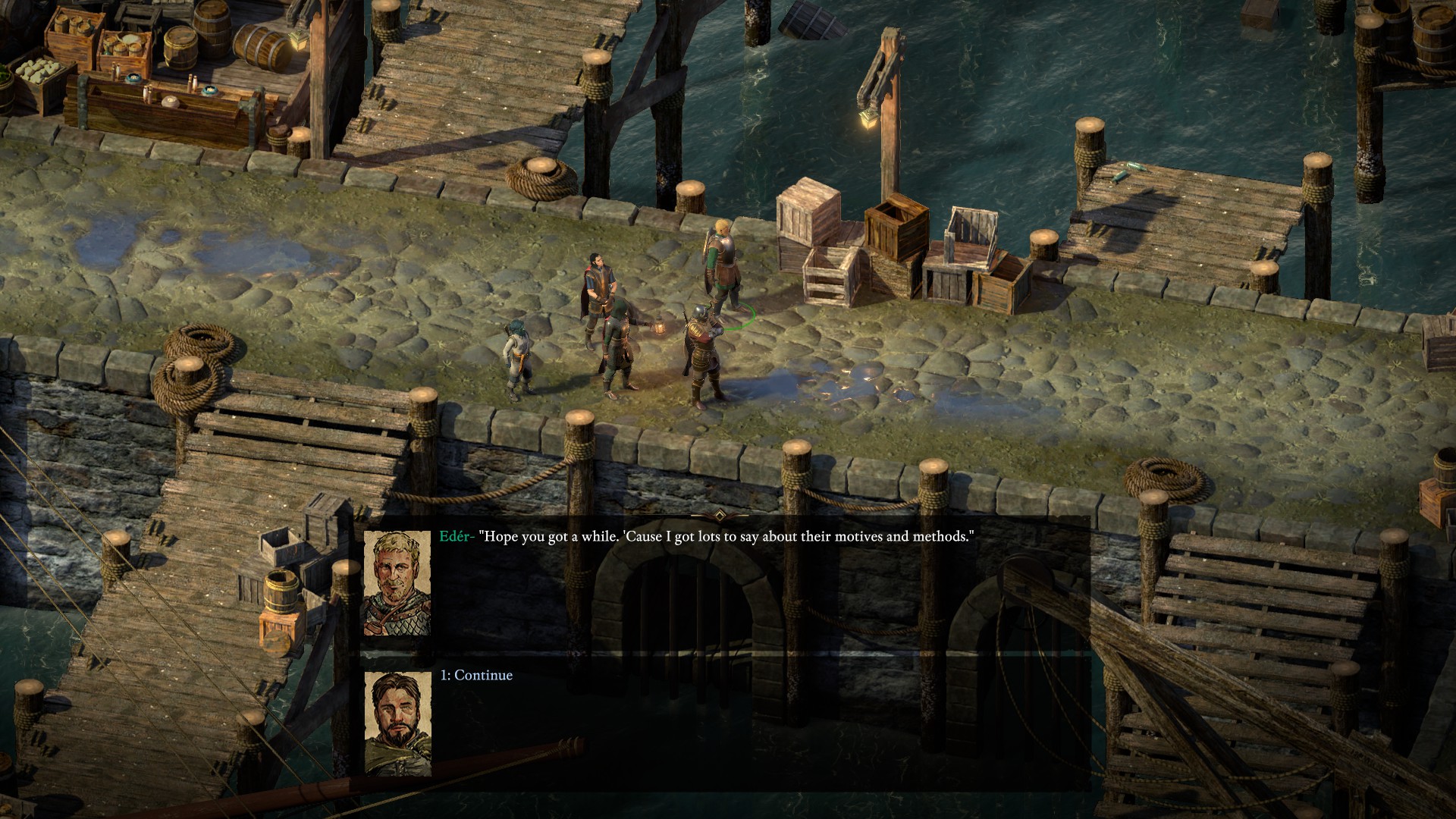
And it's in this notion of “opening-up” where Pillars II really differs from the original. Once you've finished following the story through Port Maje, Pillars II returns you to your ship and lets you sail wherever you like in the Deadfire. It puts a few pins in the map for you to follow, such as the enormous city of Neketaka and the pirate haven of Dunnage, but you can equally chart a course in a random direction and carve a stripe across the Deadfire's massive, almost entirely undiscovered map.
The archipelago itself comprises dozens of islands, most of which will have one or several points of interest on them. These range from simple supply pick-ups and little text adventure vignettes, to full-blown quests to embark on and Dungeons to explore. There's even a quest line dedicated purely to charting the Deadfire's waters, wherein a local cartographer will pay you for exploring the archipelago's islands, and let you name them as you please.
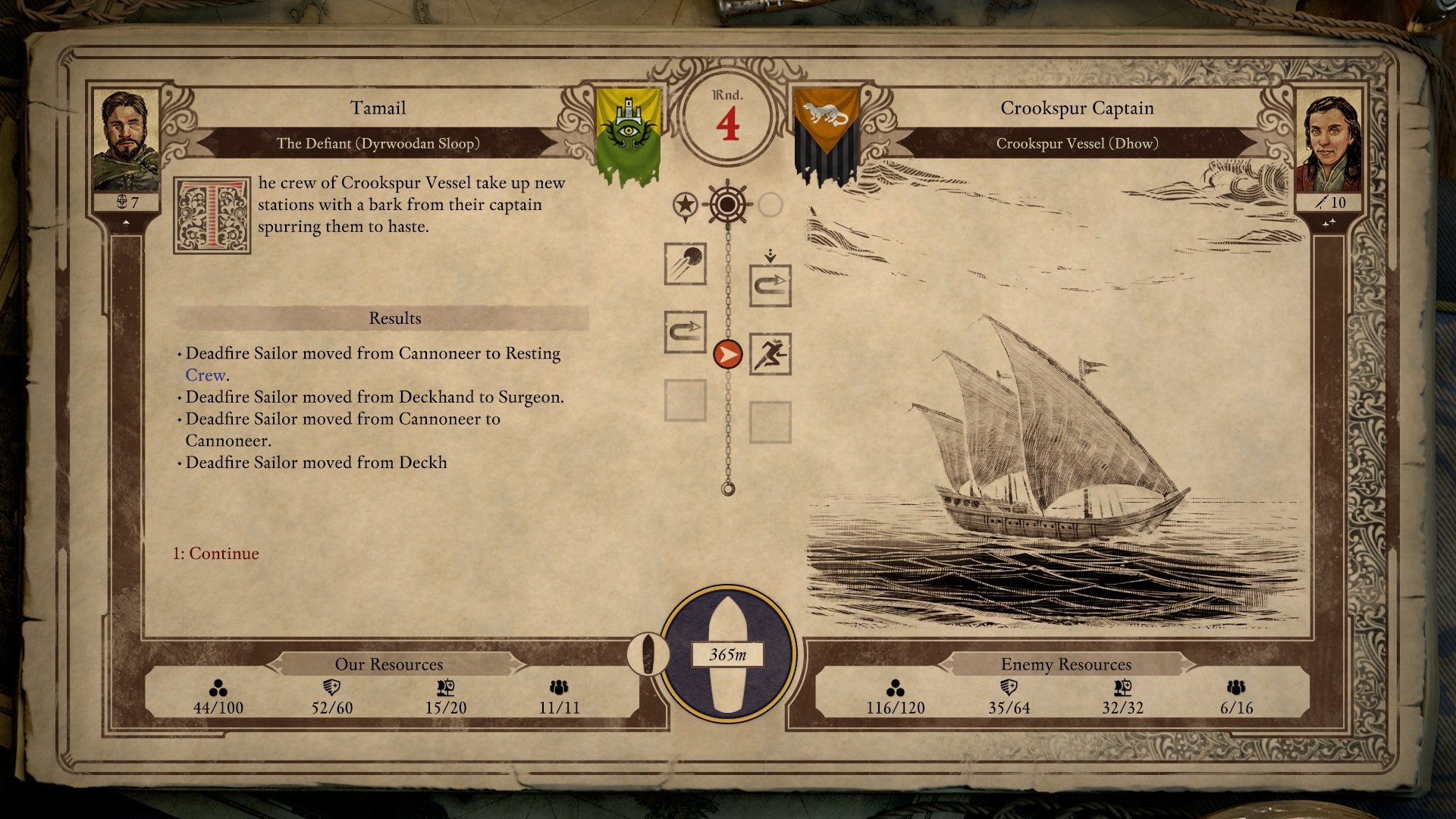
Pillars II is hardly Sea of Thieves in terms of its representation of sailing. Navigating the Deadfire amounts to clicking a point on the map and watching your ship travel across the ocean. But while you don't need to sail your ship, you do need to manage it. You must hire a crew to work the ship, and maintain several kinds of supplies to keep them alive and happy. Crew morale is an important factor. Poor quality food and water will cause morale to drop and ultimately incite mutiny, so you'll have to ensure there's a regular supply of fruit, fish, and alcoholic beverages onboard alongside the necessities. Indeed, one of the neat aspects of ship management is it provides a clear purpose for many of the more peripheral-seeming loot items in the game, and finding a crate filled with rum can be almost as exciting as discovering a new weapon.
You don't have the oceans of the Deadfire to yourself, however. Pillars II also features ship-to-ship combat, which is communicated through a hybrid of text adventure and turn-based strategy . Each ship takes turns to move and turn their boat, and fire various types of cannon shot at one another. It's a nice idea, but in practice I found the ship battle to take far too long, and found it much quicker and more entertaining to board enemy vessels and resolve the situation through the game's pausable real-time battles.
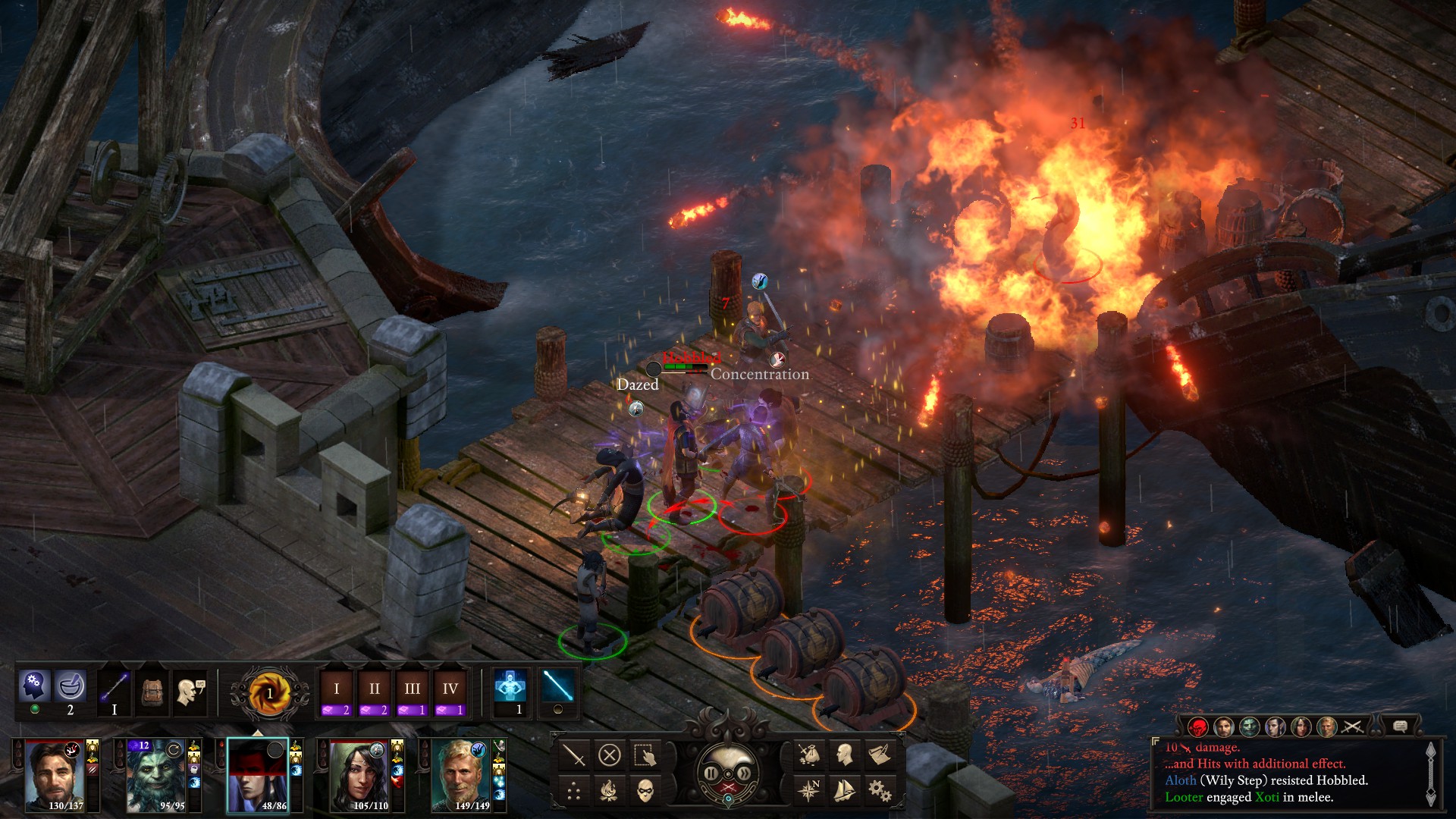
Speaking of which, the real-time battles are more or less the same as they were before, with most of the changes designed to ensure that combat is more meaningful when it happens. Fights are less frequent than in Pillars, or at least more evenly distributed throughout the game's other systems. When they occur, however, they're bigger, faster-paced, and even more spectacular than they were before. Some of the higher-level magic involves bringing blizzards, hailstorms, and even tidal waves to bear on your opponents. One party member, an aquatic 'Godlike' named Tekēhu has the ability to turn himself into a wonderfully bizarre land-shark monster. One new feature lets you “recharge” your abilities once or twice per battle, or select a specific power to cast at ten levels of power higher than your current level, which both helps to maintain the intensity of fights and also provides an additional layer of tactics to combat.
That tactical layer will vary in importance depending on how you choose to challenge yourself. One of my main criticisms of the original Pillars was that it suffered from some pretty mean difficulty spikes, and you could easily find yourself stuck in a fight that you were thoroughly unprepared for. Pillars II, by comparison, adds a whole range of difficulty options from the chilled out Story Mode to the insanely hard Path of the Damned. It also lets you choose whether battles should scale with your party's level, in an attempt to smooth out those aforementioned spikes. This mostly works, although you may still find a few atypically tough fights here and there on standard difficulty.
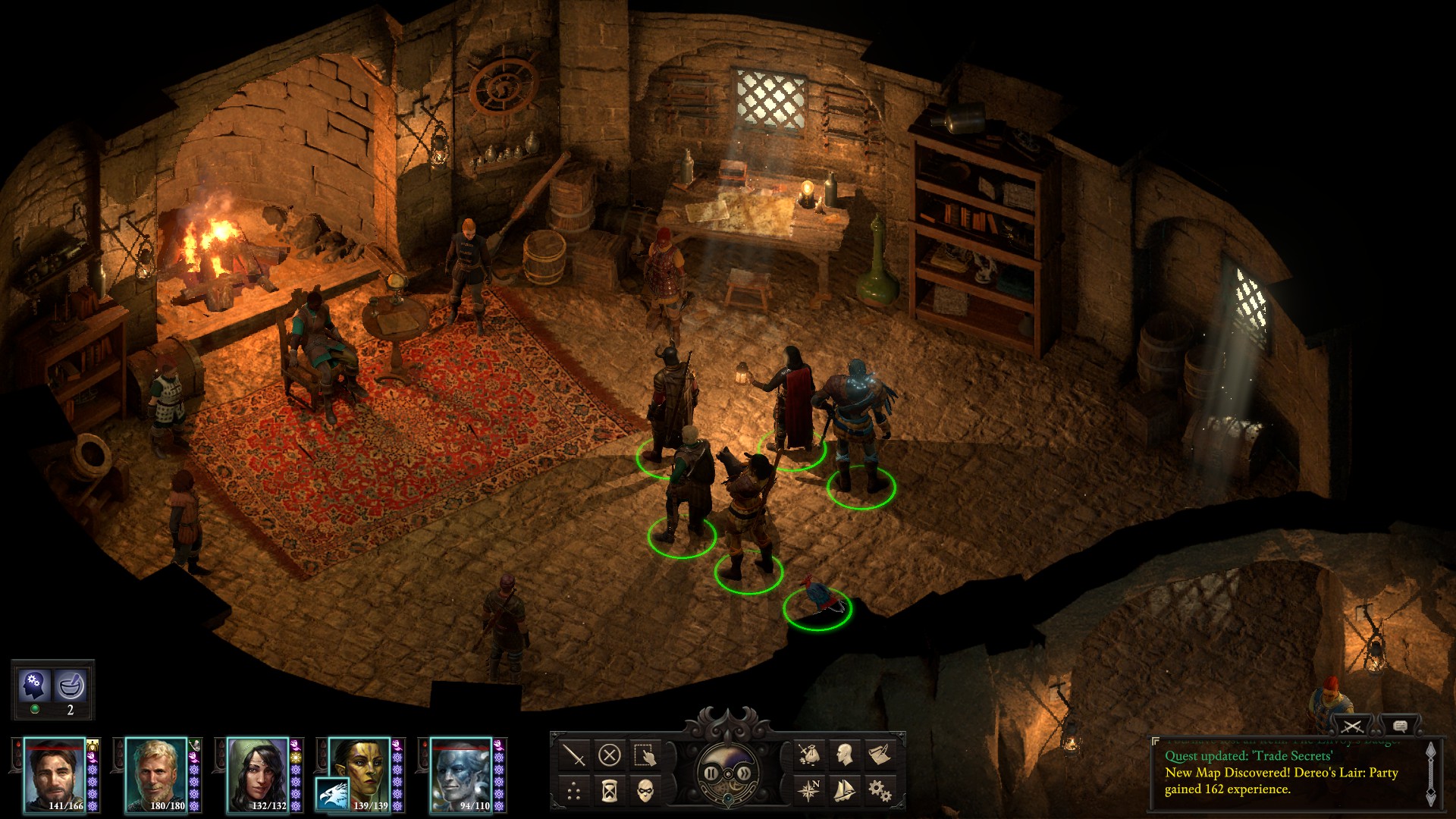
The real joy of Pillars II, however, is simply exploring the gorgeous and imaginative world that Obsidian has designed. Neketata alone is utterly enormous, a sprawling metropolis with six districts that crawl up a tropical mountainside, including a prosperous dockside and merchant quarter, a temple district, and a poverty-stricken underbelly known as The Gullet. This area alone includes a secret black market that can only be accessed through a labyrinth known as The Narrows, and a wooden elevator that descends into an ancient, haunted undercity that you can plunder for treasure...if you're brave enough. Meanwhile, the game's more eclectic quests range from breaking into an Archmage's trap-filled mansion, to discovering the mystery behind a ghost ship that roams the Deadfire cloaked in a bank of fog.
Rich and inventive as Pillars II's world is, however, I don't think it quite reaches the heights of last year's Divinity: Original Sin II. In particular, your party is rather drab by comparison. There are a couple of fun characters, Tekēhu being one. Another is Xoti. A Priestess of an alternate version of Eothas called Guan, Xoti has taken it upon herself to help lost souls find their way to the land of the dead. Her bright and friendly personality belies the great burden of souls that bears down upon her shoulders. She also carries a lantern wherever she goes, which is great for illuminating the dungeon's of Pillars II in the game's sumptuous real-time lighting effects.

Sadly, most of the other characters are played fairly straight, particularly the returning cast from Pillars. In addition, the main quest gets somewhat lost in the scope of the Deadfire, seemingly occurring in a handful of huge leaps rather than acting as a central thread from which the rest of the game hangs off. Incidentally, one of these leaps cuts off your access to the rest of the game, so ensure you've had your fill of the Deadfire before pushing too far into the main story.
My main issue with Pillars II, however, is that it is generous to a fault. The sheer size and complexity of the game and its story can make it hard to parse in some areas. One of the story's main focuses is a race of people called the Huana, who originate from the Deadfire, and reside there in a fraught relationship with the foreign trading companies. But Huana society comprises of multiple tribes and several castes, one of which has its own trading company that is independent either of the Huana or the Valian colonists.

Add to this about a dozen different gods, some of whom have multiple forms, several pirate factions, and of course, all the lore from the first game, and keeping track of it all soon becomes a real headache. The game tries to help by letting you mouse-over certain words and names to bring up a description of what that word means, but it's still a lot of information to digest. Similarly, keeping track of quests in your quest log can be difficult, simply because there are so many of them and there's no way to set one as 'Active' and then follow the given cues. I'd happily sacrifice a little of Deadfire's scope to solve some of these issues, such as a more interesting party, slightly less confusing lore, faster-paced ship combat, and a more evenly distributed plot.
It's remarkable what Obsidian has produced here, but the weight is shifted too far in favour of quantity over quality, to the point where it hurts the game. Pillars of Eternity II is a beautiful and thoroughly enjoyable RPG, one which I'd happily recommend. I'd just like its enormous map to be a little less frayed around the edges.
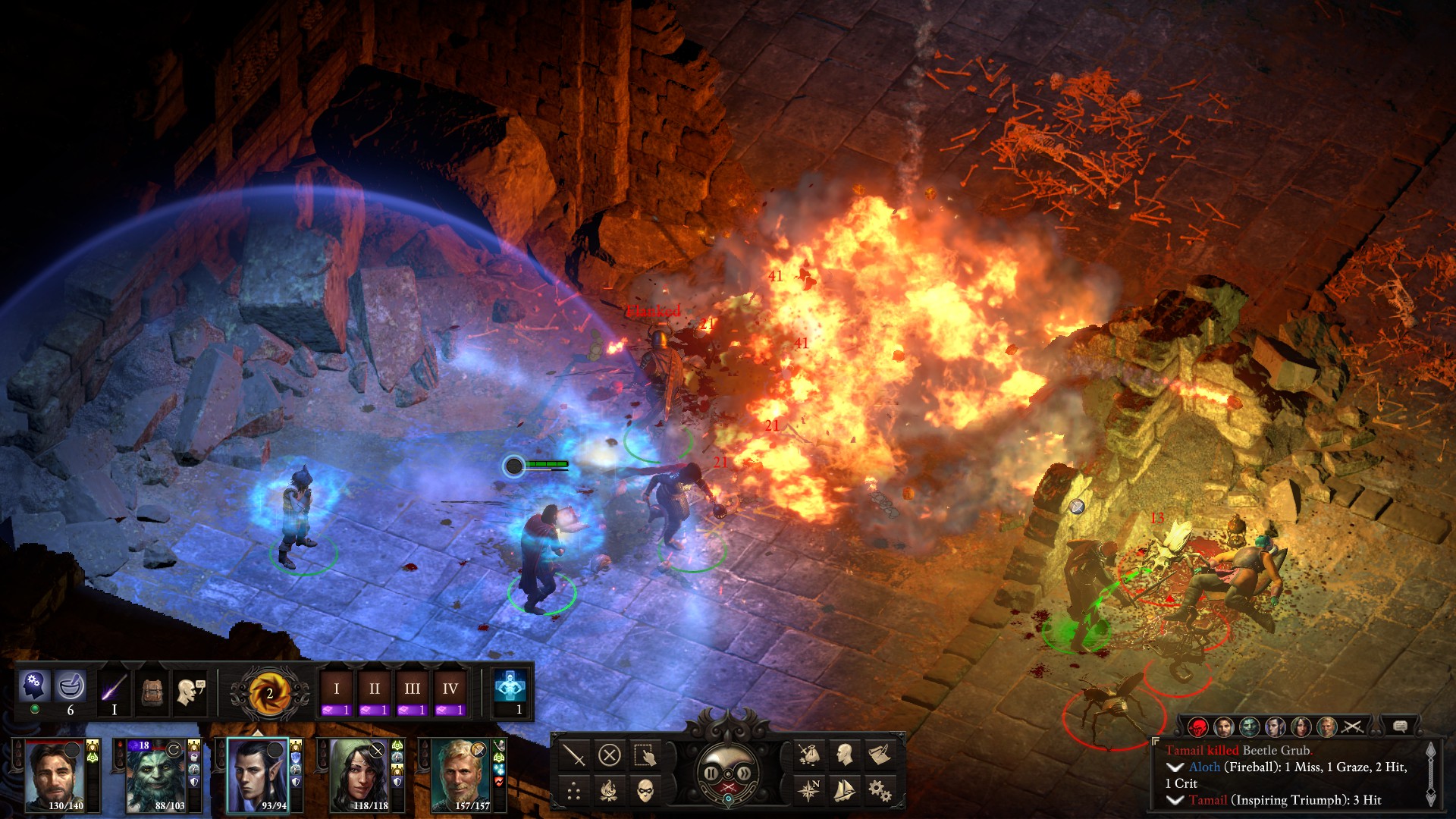


MSI MPG Velox 100R Chassis Review
October 14 2021 | 15:04

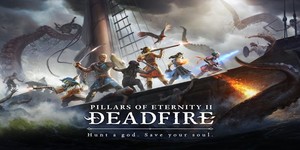
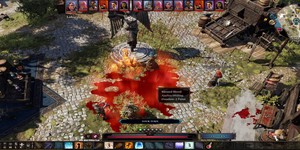






Want to comment? Please log in.